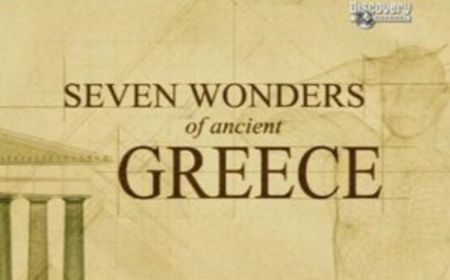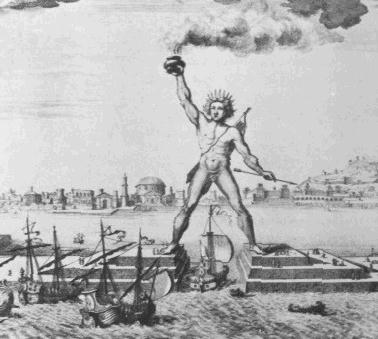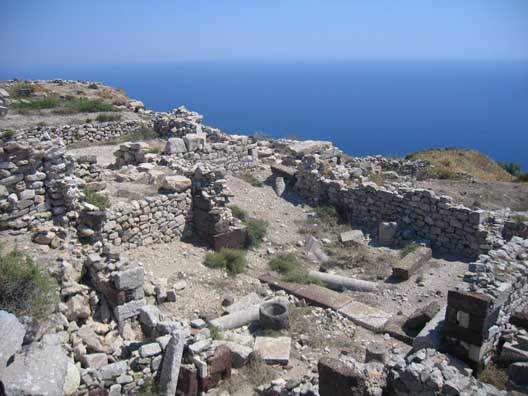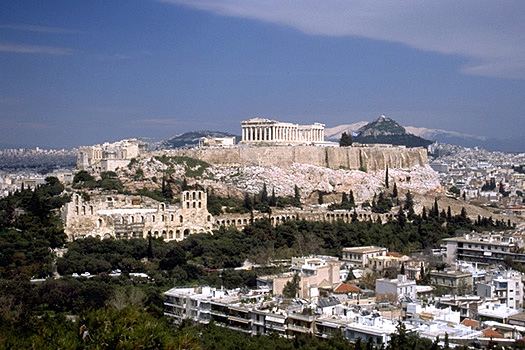Here, there must be Greece if Rome had already been mentioned. Both are among the greatest Western civilization of the past. Furthermore, it is the Greece civilization that came first (from 8th centuries BC to 146 BC), which resulted in Greek culture influencing Roman empire, which then spread in modified version to many parts of Europe, considered to be the seminal culture which provides the foundation of strong Western civilization.
Too bad I did not watch the documentary programme of the same title from Discovery Channel. I’m anticipating to watch it soon.
So, what are the seven wonders of ancient Greece that amaze people with its record-breaking aspects from architecture, art to engineering? There are many ancient Greek structures that were built in huge scale and in more grandeur condition, but only the top seven were chosen to be the best of the best, as the wonder of the ancient Greece.
1. Theatre of Epidaurus
It is a huge theatre which can holds over 15 000 people, designed by Polykleitos the Younger in the 4th century BC. It is used for dramatic performances, ceremonial events, baths and palaestra (wrestling). The original 34 rows of setings were extended in Roman times by another 21 rows. As is usual for Greek theatres (opposed to Roman theatres), the view on a lush landscape behind the stage is an integral part of the theatre. The theatre is marveled for its exceptional acoustic properties too.
2. Statue of Zeus at Olympia
The statue is made by Phidias at around 432 BC. It was erected in the Temple of Zeus, Olympia, Greece and it was one of the Seven Wonders of Ancient World. The seated statue, which stands at height of around 12 m, was a chryselephantine sculpture made of ivory and gold-plated bronze. The statue occupied half of the width of the aisle of the temple and if the statue is made to be a standing figure, then it would unroof the temple.
3. Temple of Apollo at Delphi
The temple was erected on the remains of earlier temple in around 7th century BC and it was designed by architects; Trophonios and Agamedes. The temple was a Doric hexastyle structure of 6 by 15 columns. It is destroyed in 373 BC by earthquake and then rebuilt with similar proportion in 330 BC by Spintharos, Xenodoros, and Agathon around the stylobate (stepped platform).
4. Colossus of Rhodes
It was a statue of the Greek God, Helios erected in the city of Rhodes between 292 and 280 BC. It stands at a height of over 30 m, making it as one of the tallest ancient statues in the world. It is also one of the Seven Wonders of Ancient World. It was constructed to celebrate Rhodes’ victory over the ruler of Cyprus. The statue is believed to be built of iron tie bars with brass plates fixed to form the skin. It is destroyed by 226 BC Rhodes earthquake.
5. Settlement of Santorini
Santorini is a volcanic island located in the southern Aegean Sea. It is the site of Thera eruption, one of the greatest in history which occured some 3 600 years ago at the height of Minoan civilization. The eruption is also the source of the legend of Atlantis. There was once a town, called as Minoan Pompeii (Ancient Akrotiri) which was once destroyed in 1450 BC from the volcanic eruption. The impressive buildings of the town are the three-storeys houses, some even with balconies and extensively decorated with frescoes.
6. Palace of Knossos
The great palace was built between 1700 and 1400 BC with periodic rebuildings after destruction. It is the political and ceremonial centre of Minoan civilization and culture on Crete. The palace appeared s a maze of workrooms, living spaces and store rooms close to a central square. The palace sits on 6-acres of land and had over 1 300 rooms as well as a theatre. Part of the palace is built up to five-stories high.
7. Parthenon
As Colosseum is the icon of Rome, Parthenon is the icon of Greece even till today. It is among the most famous ancient structures on Earth. It is a temple in the Athenian Acropolis, dedicated to Greek Goddess Athena. Construction began in 447 BC and completed in 438 BC. It is the most important surviving building of classical Greece and is the culmination of development of Doric order. The temple had been used as a treasury, church and mosque before. The exceptional architectural features of the temple are the subtle correspondence between the curvature of stylobate, the taper of naos walls and the entasis (visual correction) of the columns.
The overall view of the Acropolis, with the landmark, Parthenon standing overwhelmingly above others. This picture best describes ancient Greece.
Out of all these amazing ancient structures, only some survived till these days while others have been totally out of sight due to destructions from natural disasters or from the people itself. Even the survived structures have some portions partially destroyed. Many restoration works are being made to preserve these priceless structures that holds the key of the ancient Greece. As a conclusion, these seven wonders show how such impressive displays of engineering and architecture were managed in a time when technology is still at its infancy.
(The pictures above do not belong to me and the information from this post is obtained and paraphrased from browsing internet)










hey. I just got word of this unique webpage and I should really believe that this unique is a nice write-up. Bless you for this kind of awesome info.
//sir tnx for this// keep posting about greek and roman famous stricture and buildings specially abouts
its architecture.. tnx
Pingback: Past Perfect » Archive » Know Thyself
Hello,
I would like to know if you have a larger image of the theater in Epidauros, Greece?
I was notified that a publisher is interested in buying such an image and I would gladly share any sales proceeds with you if it is chosen by the publisher.
Please let me know. The deadline is May 8th.
Thank you,
Brian Humek
Irving, TX
hey
greece is a country that offers its history throughout the world, Wonders of old architecture by greeks are fantastic and elegantbut its beaches and islands are magnificente too!fernando goncalves simao!
what do the ones that are greek have in common